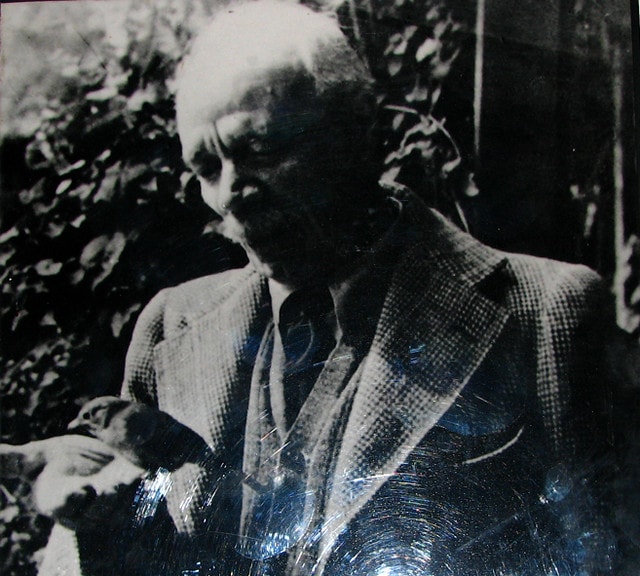If you want to know a quick answer of these questions, like who is Jim Corbett? About Jim Corbett, Biography of Jim Corbett, history of Jim Corbett, So please read our quick and short description about Jim Corbett in below:
Jim Corbett: Short Description about Jim Corbett!
| Country | British |
| Full Name of Jim Corbett | Edward James Corbett |
| Nick Name of Jim Corbett | Jim Corbett |
| Born of Jim Corbett | 25 July 1875 |
| Death of Jim Corbett | 19 April 1955 |
| Born Place of Jim Corbett | Nainital Uttrakhand |
| Death Place of Jim Corbett | Nyeri Kenya |
| Father of Jim Corbett | Christopher William Corbett |
| Mother of Jim Corbett | Mary Jane Corbett |
| Brothers of Jim Corbett | Four full brother & Two half Brother |
| Sisters of Jim Corbett | Three full sister & one half sister |
| Married | No, Unmarried |
| Wife of Jim Corbett | NA |
| Son of Jim Corbett | NA |
| Daughter of Jim Corbett | NA |
| Occupation | Hunter, Writer, naturalist |
Full Biography of Jim Corbett:

Introduction:
You must have heard the name of “Jim Corbett National Park”, but the biggest name behind this park is James Edward Jim Corbett who had hunted dozens of man-eating tigers and leopards. With the efforts of Jim Corbett, the country got the first National Park.
History of Jim Corbett:
The famous English hunter Jim Corbett was born on July 25, 1875 in Nainital, His mother’s name was Mary Jane Corbett and the father’s name was Christopher Carbet. Who were postmasters in Nainital. Big Brother Tom had taught Jim Carbet to start a gun in childhood Jim Corbett studied till high school. His childhood was as common as other children and used to play with the local children. His early education came from Philander Smith College in Nainital and when he was only 19, he started working in the railway. But since childhood, Corbett, who had a passion for nature, did not like job bonding, and left his job and began to pay attention to other things.
He started taking training to run firearm and gradually became a staunch shooter.There was a time when in most parts of Uttarakhand, the horror of man-eating tigers and dreaded cannibalic leopards reached its peak and innocent men – women, children were being hunted down and and there was trilogy on all sides. There was panic in the villages of both the Kumaon-Garhwal regions. Here a tiger had made 436 people their Victim. Even the government did not understand anything, He wanted that besides this tiger, other cannibal’s tigers, leopards were dumped to death and people should be frightened, but he could not find any definite solution. At the same time, when the government came to know of Jim Corbett, he urged Corbett to make the victims of cannibalized tigers and leopards their bullets to relieve the public. After getting government order, Jim Corbett came out on his campaign.
When they went to the villages, they saw the fear of cannibal tigers, leopards into the villagers and those who lost their members in these incidents were tears in their eyes. In such a situation, Corbett’s heart became fluid and he decided that he would take fear of killing all the cannibalic tigers, leopards that have become dangerous for mankind. After quite a lot of embarrassment, he eventually made the man-eating tiger the target of his bullets, who had made 436 people so far as his maiden. After this he killed the first cannibalic leopard in 1910, it had killed 400 people. After that, after that Jim Corbett’s gun did not rest, they started making their targets after one such tigers, leopards who had become synonymous with terror.
In 1926 he had killed another leopard, this leopard had killed 126 people. Jim Corbett became famous in the whole of Uttarakhand and became a symbol of the faith of the people. In any rural area, if there was an activity of man-eating tigers or leopards, then Jim Corbett would be called immediately. Regarding Jim Corbett it is said that once he entered the forest of the respective area then the concerned man-eaters came back only after killing the tiger or the leopard.
Many times the encountered of Jim Corbett with man-eating tigers and leopards were so dangerous that Corbett escaped from the attack. From the year 1907 to the year 1938, from the year 1907 to the year 1938, Jim Corbett made 33 man-eating tigers and leopard’s victim of their bullets. These 33 cannibalic tigers and leopards had killed 1200 people.
Jim Corbett wrote in his book “Man Eaters of Kumaon” that many of these cannibals had already been injured and were unable to hunt in the forest, so they entered to the township and killed the people and there were those who already injured by bullets
While hunting, Jim Corbett always took care that non-cannibal tigers or leopards should not be killed by their bullets. They were specializing in identifying common tigers, leopards and cannibals, tigers. With age, Jim Corbett’s heart began to change, and he started thinking that if such tigers and leopards killing continued then one day all of them would be eliminated. When this thinking came, they left hunting forever and they started working for their protection. Later, the then government made him the guardian of wildlife. Corbett was very successful in this new role, and he brought concrete and effective plans for the protection of tigers. After retirement, he wrote a book called “Man Eaters of Kumaon”, for which he was conferred with the “Kaiser-A-Hind Award” in 1928.
Later, in collaboration with his special friend champion, he helped in establishing the first national park on the hill in India in 1936. Looking at Jim Corbett’s sacrifice, dedication and cooperation National Park of Ramnagar was named after Jim Corbett. After spending his entire life in the jungles, Jim Corbett left for Kenya after Independence and died in 1955 at the age of 79.
Career started as a railway employee:
In Nainital, he started his early education with Philander Smith College and started working at the railway at the age of 19.
Something special was Jim Corbett:
Jim Corbett was very fond of photography.
The “Indo-Chinese Tiger” is also known as the “Corbett Tiger”.
After retiring, Jim Corbett also wrote a book named “Man Eaters of Kumaon”.
He was also awarded the title of “Kaiser-e-Hind” in 1928.
Books Written by Jim Corbett:
- Man Eaters of Kumaon (1944)
- Temple tiger, and more man-eaters of Kumaon (1955)
- The man-eating leopard of Rudraprayag (1948)
- My India (1952)
- Jungle lore (1953)
- Jim Corbett’s India (1978)
- The Temple Tiger and Tree Tops Jim Corbett.
